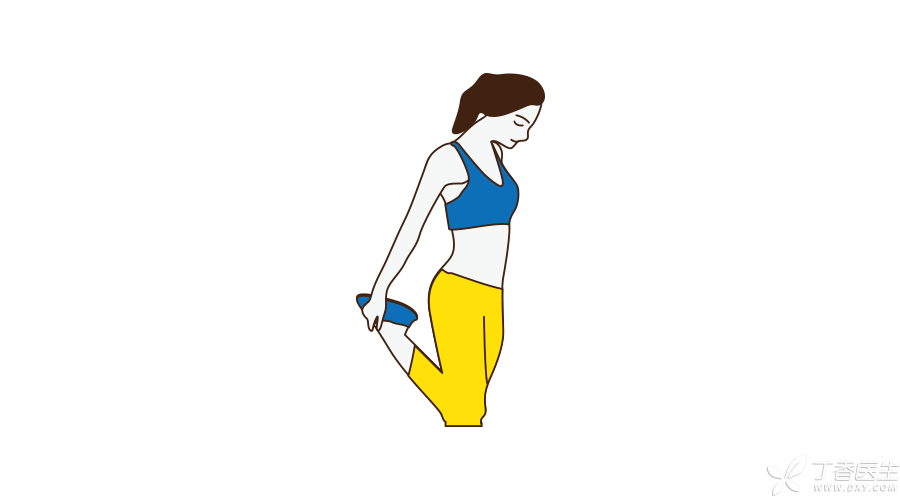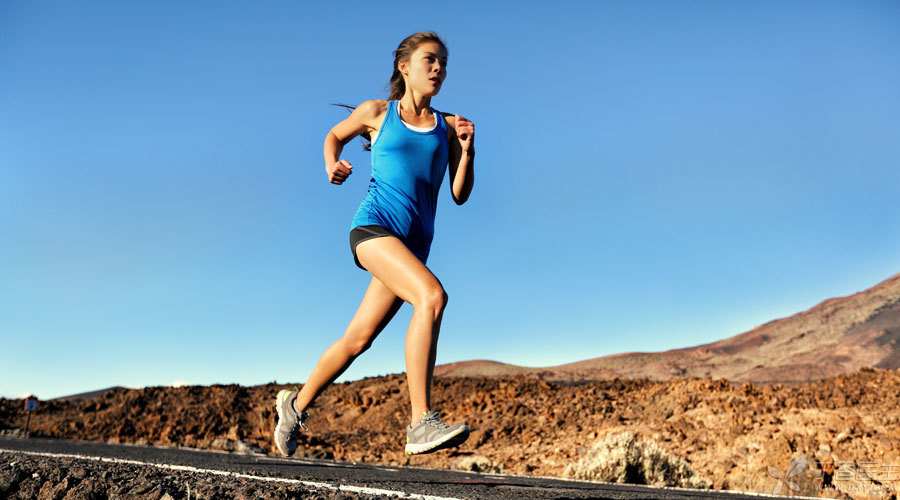
The knee (knee joint) is one of the largest joints in the human body. It not only bears your weight, but also needs to be used as long as you take your legs.
Dr. Clove really wants to say for his knee: Tired!
In fact, unconsciously, the knee has been injured all the time, such as gaining a little weight, exercising a little more, getting older…
Today, Dr. Clove will recommend you a very simple action-squatting against the wall. It is perfect to use it to do some maintenance on your knees.
Let’s invite a professional demonstration teacher, Dr. Wang Hua of Orthopaedics, to teach us.
The standard movement of squatting against the wall
Let’s look at the first demonstration, the standard action of squatting against the wall:
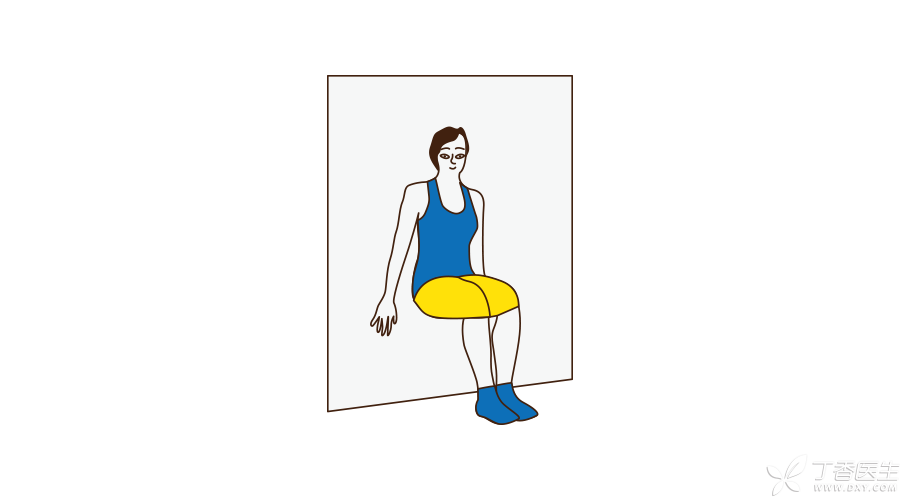
Squatting against the wall is a very simple exercise. If you can stick to it, you can strengthen ligaments and muscles and make the knee joint more stable and strong.
Three Key Points of Doing a Good Job
Squatting against the wall is not just about leaning against the wall. Squatting is too shallow to exercise. Squatting too deep and under too much pressure are not conducive to knee joint rehabilitation.
Therefore, after understanding the basic standard actions, we should also pay attention to 3 key points.
Step 1 Feet and Knee
Open your feet as wide as your hips, point your knees and toes straight ahead, and your knees cannot move forward beyond your toes.
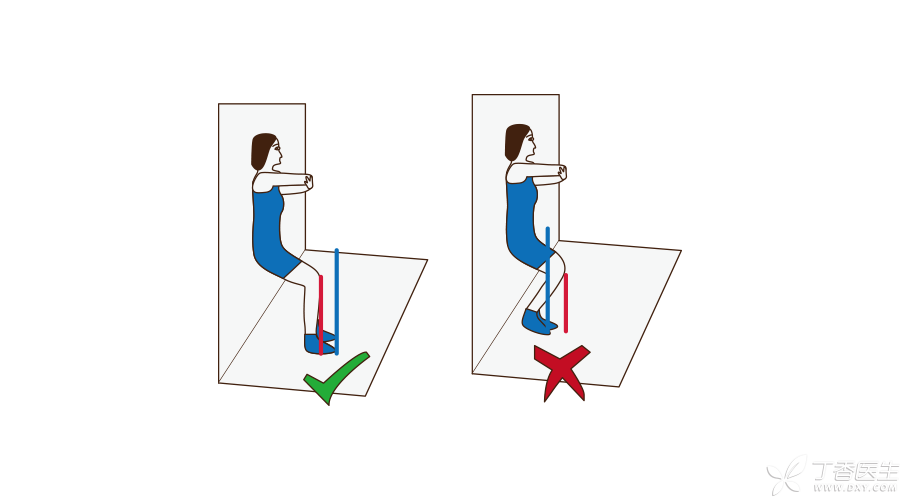
2. Angle
Keep the direction of the knee joint always the same as that of the toe, and there should be no included angle. The center of gravity falls on the heel, the lower leg is perpendicular to the ground, and the knee and hip flexion are all 90 degrees.
For the purpose of knee joint rehabilitation, squat against the wall, and the included angle between thigh and calf should not be less than 90 degrees.
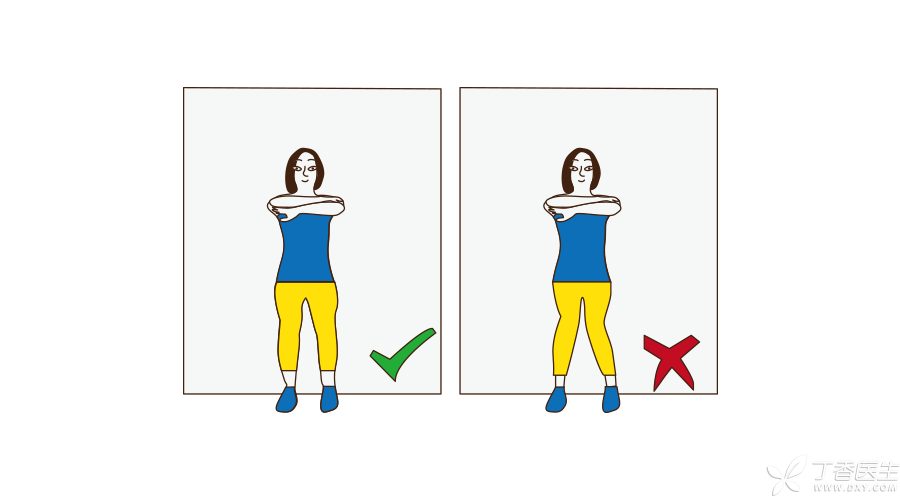
Step 3: Posture
The upper body is straight, the abdomen is tucked in and the chest is held out, the eyes are straight ahead, and the head, shoulder and back are close to the wall.
Find the most suitable way to squat,
Everyone has different physical conditions, so the suitable movements and exercise intensity are also different, which requires finding the most suitable exercise method on the basis of understanding the standard movements.
How to find the most suitable exercise method? You can refer to the following four aspects:
1. Knee joint bending angle
It is recommended that everyone take [only force, no pain] as the standard.
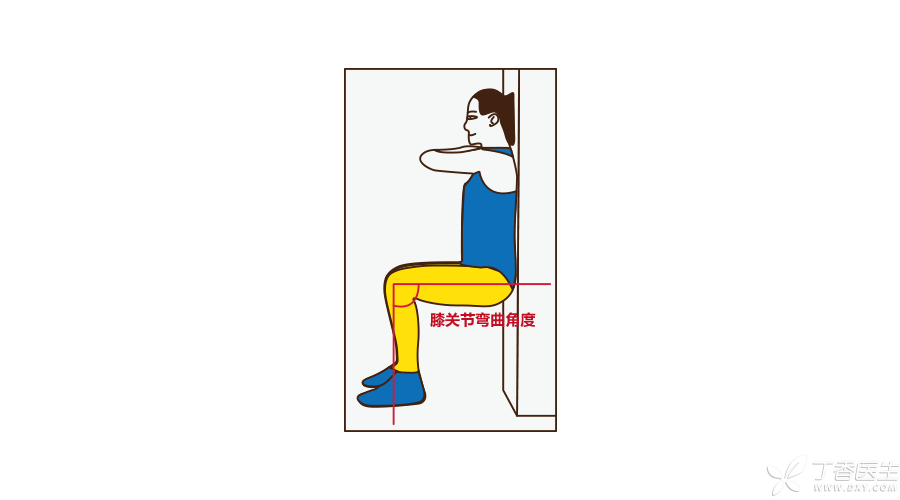
Many people suffer from knee joint pain before reaching 90 degrees, and standard movements are not applicable. At this time, the limit angle (i.e. [pain critical point]) of knee joint pain should be found first. The search method is as follows:
The legs are straight, the shoulders are leaning against the wall, then the upper body slowly slides down along the wall, and the hips and knees are bent at the same time until knee joint pain occurs, which is the critical point of pain.
When we choose the bending angle of the knee joint, we must not squat down below the angle below this critical point. Generally, the angle close to but not reaching the pain critical point is adopted as the maximum load.
For example, if we find that the critical point of pain is knee joint bending 100 degrees, then we can adopt the training method of gradually reducing the angle and increasing the squat range in turn of 160 degrees, 140 degrees, 120 degrees, 115 degrees, 105 degrees, approaching but not exceeding 100 degrees.
For those who feel pain when bending their knees slightly, it is not suitable to squat against the wall. At this time, they can exercise by lying down and raising their legs under the guidance of professionals.
2. How long does it take to squat at a time?
Rehabilitation training is different from bodybuilding training. It does not require each group to exhaust their strength, especially in the early stage of exercise. Excessive time will lead to posture deformation, but will cause secondary injury to knee joint.
The usual process is that the muscles are very laborious in the initial stage. If you stick to it for a while, you will feel congestion and fever in the muscles, then the muscles will ache and swell, then you will tremble with tiredness, and finally you will have to stand up because you are too tired to stick to it.
It is recommended to stop exercising immediately before or when muscles tremble.
3. How many times did you practice in total?
Exercise should be carried out step by step and within our capabilities. In the primary stage, 5-6 movements should be completed each time, in the intermediate stage, 7-8 movements should be completed each time, and in the advanced stage, 9-10 movements should be completed each time.
Each group should rest between exercises, also according to the principle of gradual and orderly progress, with a rest of 1 minute to 1.5 minutes for each action completed in the primary stage, 45 seconds for each action completed in the intermediate stage, and 30 seconds for each action completed in the advanced stage.
Primary Exercise Program
Here, I’d like to attach a primary exercise plan for squatting against the wall ().
- Knee joint warm-up exercise for 1 minute, hip joint warm-up exercise for 1 minute, waist and abdomen warm-up exercise for 1 minute; Knee bending angle 160 degrees, maintain for 2 minutes (group 1), rest for 1 minute; Knee bending angle 135 degrees, maintain for 1.5 minutes (group 2), rest for 1 minute; Knee bending angle 105 degrees, maintain for 1 minute (group 3), rest for 1 minute; Bend the knee at 90 degrees for 40 seconds (group 4) and rest for 1 minute. Bend the knee at 90 degrees for 30 seconds (group 5) and rest for 1 minute. Knee bending angle 90 degrees for 20 seconds + Knee bending angle 135 degrees for 20 seconds + Knee bending angle 160 degrees for 20 seconds (Group 6)
Finally, stretch the quadriceps femoris (as shown in the figure below) and the training is over.
